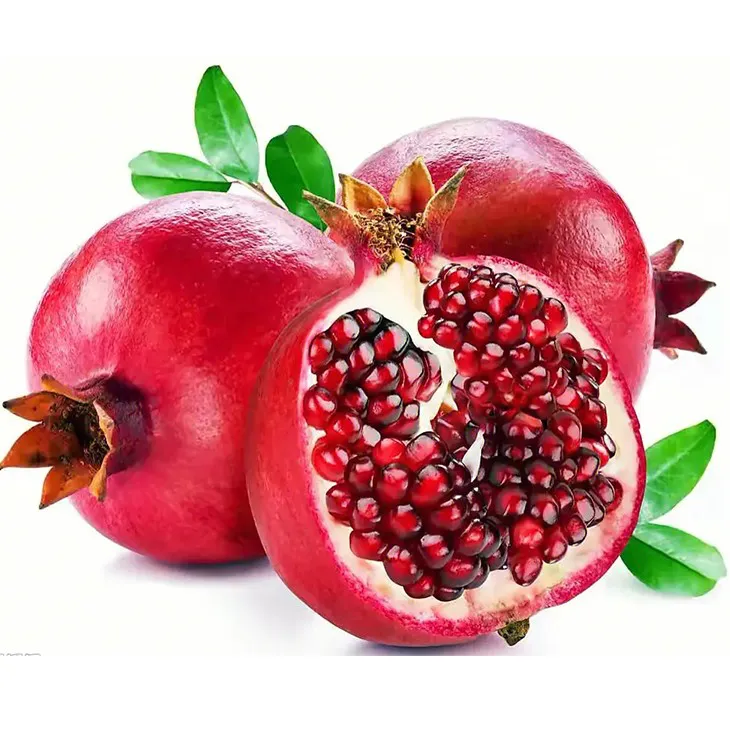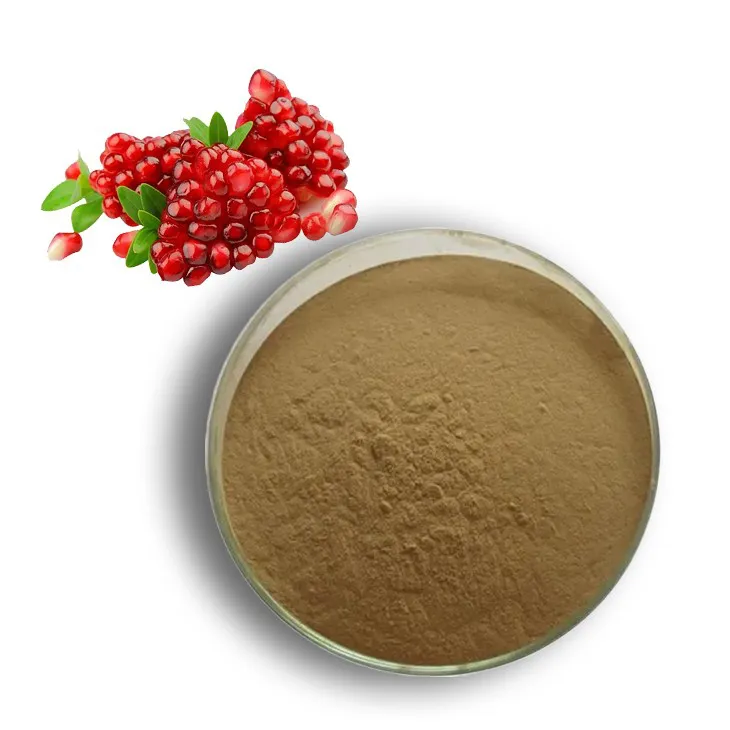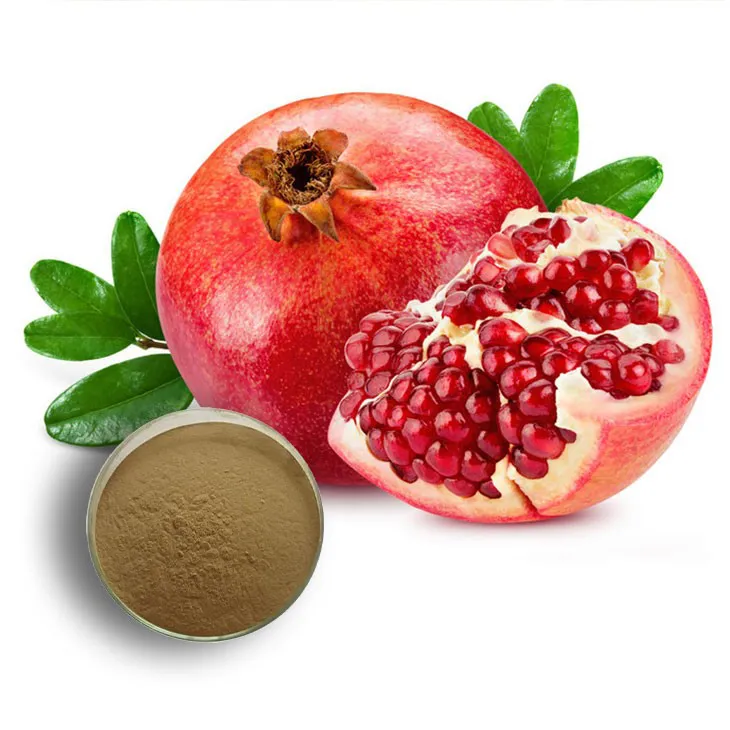- 0086-571-85302990
- sales@greenskybio.com
How to make powder with pomegranate extract?
2024-11-28

1. Introduction
Pomegranate, known for its rich nutritional value and various health benefits, has become a popular source for extraction to make powders. Pomegranate Extract powder can be used in a wide range of applications, such as in the food industry for flavoring and fortifying products, in the pharmaceutical industry for its potential medicinal properties, and in the cosmetic industry for skin - care formulations. In this article, we will explore the comprehensive process of making high - quality Pomegranate Extract powder, covering extraction methods, drying techniques, and quality control aspects.

2. Pomegranate Extraction methods
2.1 Solvent extraction
Solvent extraction is one of the commonly used methods. Different solvents can be chosen depending on the target components in the pomegranate. For example, ethanol is often a preferred solvent. The process involves crushing the pomegranate seeds or whole fruits into a pulp. Then, the pulp is mixed with the solvent in a suitable ratio. For instance, a ratio of 1:3 (pulp:solvent) can be used. The mixture is then stirred continuously for a certain period, usually around 2 - 4 hours at room temperature. This allows the active compounds in the pomegranate to dissolve into the solvent. After that, the mixture is filtered through a filter paper or a fine - mesh sieve to separate the liquid extract from the solid residues.
2.2 Supercritical fluid extraction
Supercritical fluid extraction (SFE) is a more advanced and environmentally friendly method. In this process, carbon dioxide (CO₂) is often used as the supercritical fluid. The pomegranate material is placed in an extraction vessel. The CO₂ is pressurized and heated to reach its supercritical state. In this state, CO₂ has the properties of both a gas and a liquid, which enables it to effectively extract the desired components from the pomegranate. The advantages of SFE include high selectivity, no solvent residue in the final product, and relatively fast extraction speed. However, the equipment for SFE is more expensive compared to solvent extraction methods.

3. Drying techniques for pomegranate extract
3.1 Spray drying
Spray drying is a widely used drying method for converting the liquid pomegranate extract into powder. In this process, the liquid extract is first atomized into fine droplets through a nozzle. These droplets are then introduced into a drying chamber where hot air is blown. The hot air rapidly evaporates the moisture from the droplets, leaving behind the solid components in the form of powder. The inlet temperature of the hot air can range from 150 - 200°C, while the outlet temperature is usually around 80 - 100°C. One of the key factors in spray drying is to control the droplet size, which can be adjusted by changing the nozzle size and the pressure of the liquid feed. A smaller droplet size generally results in a more uniform powder with better drying efficiency.
3.2 Freeze - drying
Freeze - drying, also known as lyophilization, is another effective drying technique. First, the pomegranate extract is frozen at a very low temperature, typically - 40 to - 50°C. This freezing process turns the water in the extract into ice. Then, under a vacuum condition, the ice is directly sublimated from the solid state to the gaseous state without passing through the liquid state. The advantage of freeze - drying is that it can better preserve the bioactive components in the pomegranate extract as it minimizes the damage caused by heat. However, freeze - drying is a relatively slow process and requires more expensive equipment compared to spray drying.

4. Quality control in making pomegranate extract powder
4.1 Purity assessment
Ensuring the purity of the pomegranate extract powder is crucial. One way to assess purity is through chromatography techniques such as high - performance liquid chromatography (HPLC). HPLC can separate and quantify the different components in the powder. For example, it can detect the presence of phenolic compounds, which are important bioactive substances in pomegranates. The purity should meet the specified standards for the intended use. For food - grade pomegranate extract powder, the purity requirements may be different from those for pharmaceutical - grade powder.
4.2 Microbiological control
Microbiological control is essential to prevent contamination. Tests for bacteria, fungi, and yeast should be carried out regularly. The total viable count of microorganisms in the powder should be within the acceptable limits. For example, in food - grade pomegranate extract powder, the total aerobic microbial count should typically be less than a certain number per gram, say 1000 CFU/g. To achieve microbiological control, good manufacturing practices (GMP) should be followed during the entire production process, including proper cleaning and sterilization of equipment, and storage in a clean and dry environment.
4.3 Moisture content determination
The moisture content of the pomegranate extract powder has a significant impact on its stability and quality. Excessive moisture can lead to caking, spoilage, and reduced shelf - life. Moisture content can be determined using methods such as the Karl Fischer titration method. The ideal moisture content for pomegranate extract powder is usually around 3 - 5%. If the moisture content is higher than this range, additional drying steps may be required.

5. Packaging and storage of pomegranate extract powder
Once the pomegranate extract powder has been produced and quality - controlled, proper packaging and storage are necessary. The powder should be packaged in air - tight containers, such as aluminum - foil bags or glass jars with tight - fitting lids. This helps to prevent moisture absorption, oxidation, and contamination from the environment. For long - term storage, the powder should be stored in a cool, dry, and dark place. The storage temperature should preferably be below 25°C. If stored under these conditions, the pomegranate extract powder can maintain its quality and bioactivity for an extended period.
6. Conclusion
Making powder from pomegranate extract involves a series of complex but controllable processes. From the extraction of pomegranate components using different methods to the drying of the extract and strict quality control measures, each step plays a vital role in producing high - quality pomegranate extract powder. With the increasing demand for natural and healthy products, pomegranate extract powder has great potential in various industries, and proper production and quality management are key to realizing its full value.
FAQ:
Question 1: What are the common extraction methods for pomegranate extract?
There are several common extraction methods for pomegranate extract. One is solvent extraction, where solvents like ethanol or water are used to dissolve the active components from the pomegranate. Another method is supercritical fluid extraction, which uses supercritical carbon dioxide. This method is often preferred as it can produce a purer extract with fewer solvent residues and can better preserve the bioactive compounds of the pomegranate.
Question 2: How can we ensure the quality of pomegranate extract during the extraction process?
To ensure the quality of pomegranate extract during extraction, first, the raw materials should be of high quality, that is, fresh and ripe pomegranates should be selected. The extraction conditions such as temperature, pressure (in the case of supercritical fluid extraction), and solvent concentration (in solvent extraction) need to be carefully controlled. Also, proper filtration and purification steps should be carried out to remove impurities and unwanted substances.
Question 3: What drying techniques are suitable for making pomegranate extract powder?
Spray drying and freeze - drying are two suitable drying techniques for making pomegranate extract powder. Spray drying involves atomizing the liquid pomegranate extract into a hot drying medium, usually air. This results in rapid evaporation of the solvent and formation of powder. Freeze - drying, on the other hand, first freezes the extract and then removes the water by sublimation under low pressure. Freeze - drying is more suitable for heat - sensitive pomegranate extracts as it can better preserve the bioactivity of the components.
Question 4: How do we control the particle size of the pomegranate extract powder?
The particle size of the pomegranate extract powder can be controlled in several ways. During the drying process, the parameters of the drying equipment can be adjusted. For example, in spray drying, the nozzle size and the atomization pressure can affect the particle size. Additionally, post - processing methods such as milling and sieving can be used to further adjust and control the particle size of the powder.
Question 5: What are the main bioactive compounds in pomegranate extract powder?
The main bioactive compounds in pomegranate extract powder include polyphenols, such as ellagic acid, punicalagin, and anthocyanins. These compounds are known for their antioxidant, anti - inflammatory, and potential health - promoting properties.
Related literature
- Pomegranate Extract: Composition, Health Benefits, and Industrial Applications"
- "Advances in Pomegranate Extract Processing and Quality Control"
- "The Role of Pomegranate Extract in Functional Food and Nutraceutical Development"
- ▶ Hesperidin
- ▶ citrus bioflavonoids
- ▶ plant extract
- ▶ lycopene
- ▶ Diosmin
- ▶ Grape seed extract
- ▶ Sea buckthorn Juice Powder
- ▶ Beetroot powder
- ▶ Hops Extract
- ▶ Artichoke Extract
- ▶ Reishi mushroom extract
- ▶ Astaxanthin
- ▶ Green Tea Extract
- ▶ Curcumin Extract
- ▶ Horse Chestnut Extract
- ▶ Other Problems
- ▶ Boswellia Serrata Extract
- ▶ Resveratrol Extract
- ▶ Marigold Extract
- ▶ Grape Leaf Extract
- ▶ blog3
- ▶ blog4
-
The best peony root extract in nature.
2024-11-28
-
100% Pure Organic Baicalin.
2024-11-28
-
Organic Cordyceps Extract Powder Suppliers.
2024-11-28
-
Chinese cactus extract suppliers.
2024-11-28
-
White Peony Extract
2024-11-28
-
Beta Carotene
2024-11-28
-
Thunder God Vine Extract
2024-11-28
-
Cassia Seed Extract
2024-11-28
-
Black Rice Extract
2024-11-28
-
Milk Thistle Extract
2024-11-28
-
Sophora Flavescens Root Extract
2024-11-28
-
Dandelion Root Extract
2024-11-28
-
Coconut Water Powder
2024-11-28
-
Cocoa Extract
2024-11-28





















